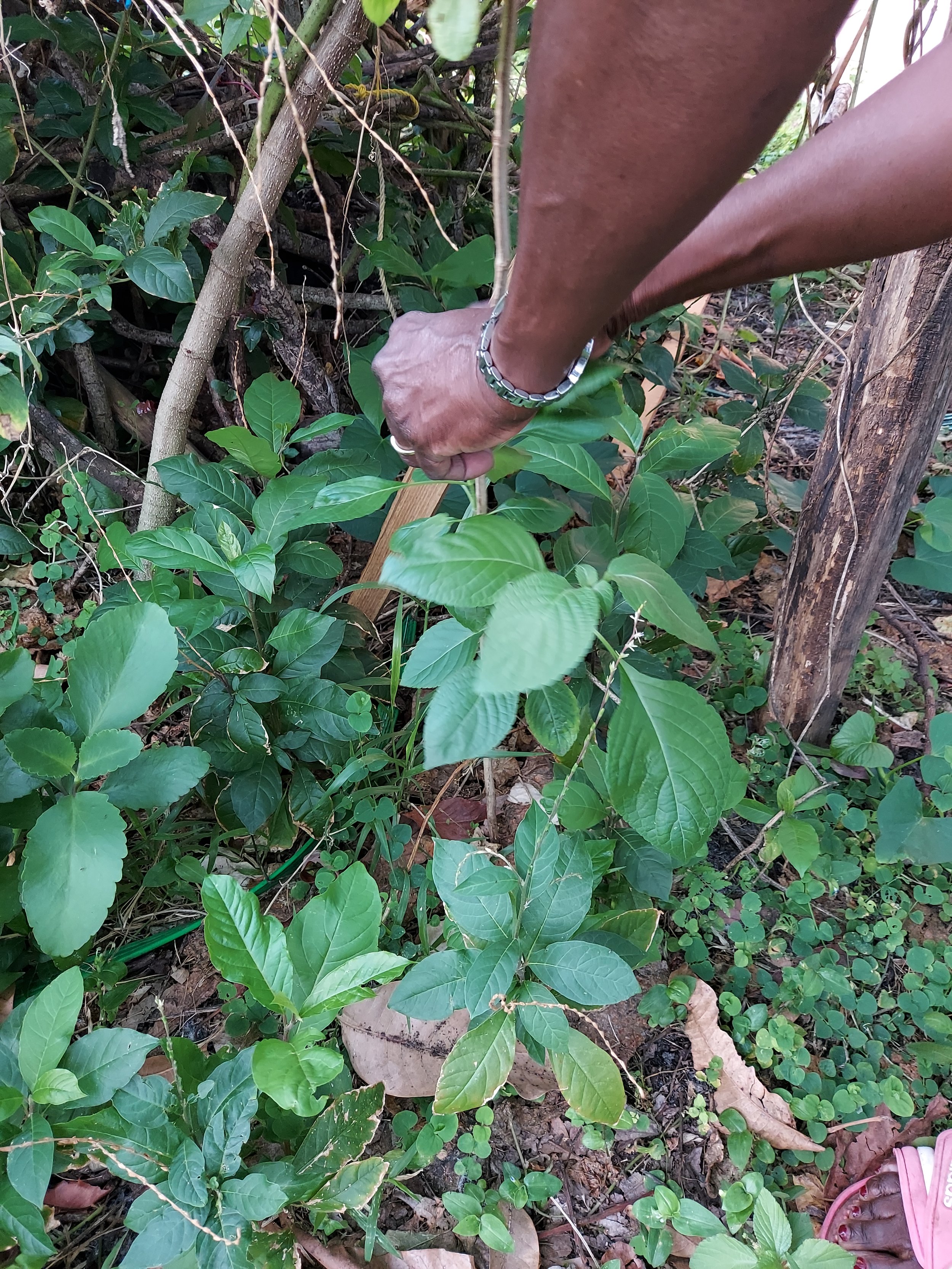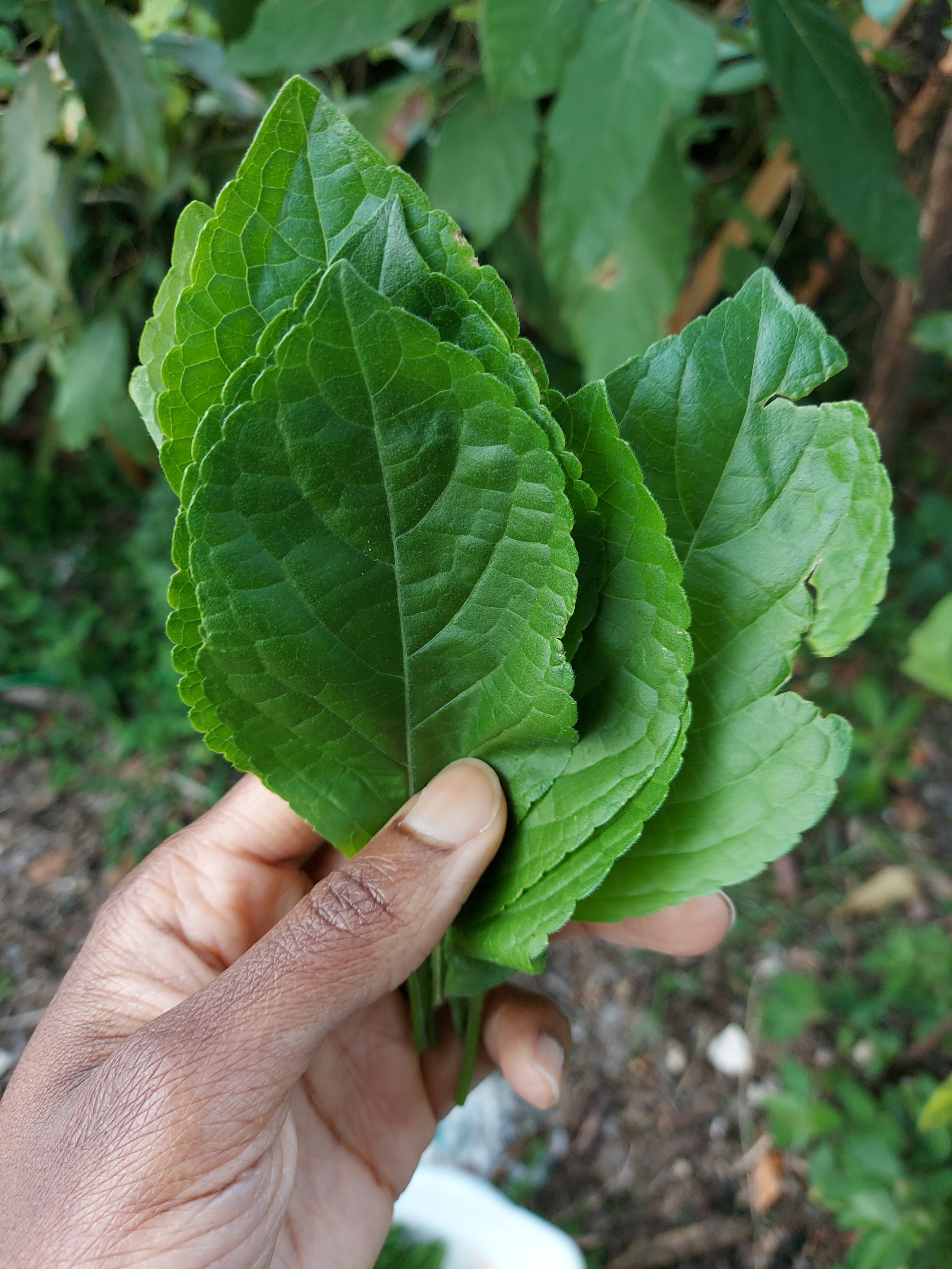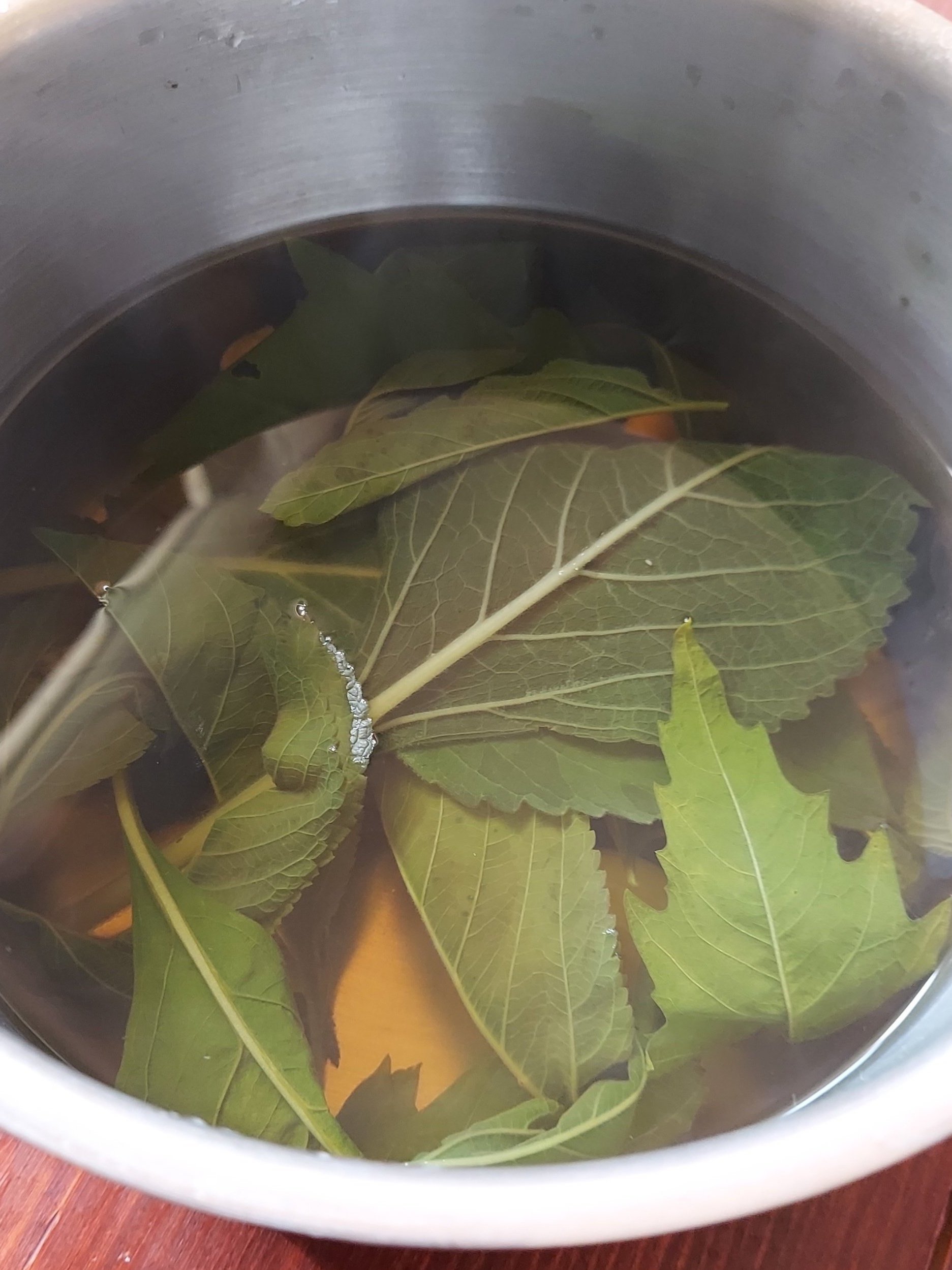My work has always been personal and representative of my family and friends as that is where I pull much of my inspiration from. Growing up my mother had paintings of Haitian Lakous, marketplaces and women hanging up around the house. I heard way more Haitian Kreyol than english being spoken at home and the taste of haitian food was always on my palette.
As we entered into our global pause and time of reflection last year in March, I went back to my family's home in Florida to use that time to slow down and be in a more sunny, nature-filled environment as opposed to the concrete cities I was living in. I also knew that I'd be enjoying some home cooked meals way more frequently and that alone got me excited!
Diri Djon Djon with peas
As I sat in my childhood room surrounded by a growing collection of food and African diasporic magazines I had amassed, I was thinking of creative ways to use them outside of my usual painting and printmaking practice. Around the same time I also began hearing more and more news segments reporting on the food disparities and lack within Black neighborhoods. Now don't get me wrong, the way our food system is set up most definitely affects black and latinx folks disproportionately, but there was another aspect of our relationship to food that was not being told.
In the evenings I would see my mom coming in from her backyard garden with a handful of leaves, one of which being Atiyayo, that would later be brewed into teas that would ease digestion, aid blood circulation, relieve constipation and several other discomforts. It was then that I understood at a deeper level and could vividly see the value of the food knowledge we already possessed but just needed to remember! So what does it look like when we remember the knowledge around food that is ingrained in our spirits? What happens when we reach back and forward to shed light on our culinary traditions and the memories of our elders who kept it going? What happens when we see the abundance within black folks and the foods that we eat? These questions would make way for the Food Collages I began creating and sharing with folks.
I was told in 2019 at a gathering to look up the work of Vertamae Smart-Grosvenor after sharing some of my thoughts on black folks and food, but it was only this year that I read her book Vibration Cooking and in it I found a pathway in which I could enter into my understanding of food from a visual arts and writing perspective. Grosvenor's writing gave me the permission I needed to give myself that my voice, my perspective, my travels and understanding of food within the African diaspora has a place in this world and deserves to be shared. Vibration Cooking uplifted my lack of measuring every ingredient precisely by affirming the role ones spirit/intuition plays in the kitchen, it honored my travels as a young black woman moving freely throughout the world, and the love and matter-of-factness she had about her Gullah/Geechee roots felt deeply honoring.
“Vibration Cooking or the Travel Notes of a Geechee Girl” first published in 1970
Along with the books of Vertame Grovsnor, I've read the works of and listened to chefs and culinary historians like Michael W. Twitty, Jessica B. Harris, Kwame Onwuachi, Tonya Holland, Shawn Sherman, Thérèse Nelson and Krystal Mack to name a few. All of them have entered into the wider conversation around food, culture and tradition through their own perspectives and life experiences, whether through zines, brick and mortar restaurants, pop-up events and websites filled with resources for young aspiring creatives interested in food.
The work I have been creating and will continue to create combining food and art is only a continuation from where I began as a child enjoying the best of Haitian culinary dishes to now paying homage to the knowledge and skills of my elders and others whom I share a deep passion of storytelling, African diasporic foods and culinary traditions with.
“Black Folks” Letterpress print, 2021






